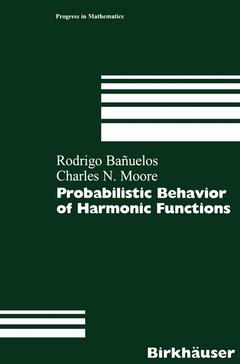Description
Probabilistic Behavior of Harmonic Functions, Softcover reprint of the original 1st ed. 1999
Progress in Mathematics Series, Vol. 175
Authors: Banuelos Rodrigo, Moore Charles N.
Language: English
Subjects for Probabilistic Behavior of Harmonic Functions:
Keywords
Maxima; Maximum; Poisson kernel; Probability; Singular integral; Variance; calculus; harmonic analysis; logarithm
52.74 €
In Print (Delivery period: 15 days).
Add to cart209 p. · 15.5x23.5 cm · Paperback
Description
/li>Contents
/li>Comment
/li>
Harmonic analysis and probability have long enjoyed a mutually beneficial relationship that has been rich and fruitful. This monograph, aimed at researchers and students in these fields, explores several aspects of this relationship. The primary focus of the text is the nontangential maximal function and the area function of a harmonic function and their probabilistic analogues in martingale theory. The text first gives the requisite background material from harmonic analysis and discusses known results concerning the nontangential maximal function and area function, as well as the central and essential role these have played in the development of the field.The book next discusses further refinements of traditional results: among these are sharp good-lambda inequalities and laws of the iterated logarithm involving nontangential maximal functions and area functions. Many applications of these results are given. Throughout, the constant interplay between probability and harmonic analysis is emphasized and explained. The text contains some new and many recent results combined in a coherent presentation.




